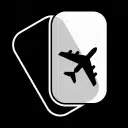5 Important Tips for Flying with Dogs in Private Planes
It’s amazing how much emotional stability pets can provide, especially when traveling. For those that get the pre-flight jitters or those that have an important meeting awaiting their arrival at their destination, flying with dogs in private planes can offer comfort and support.
If you’ve never traveled with your dog before or are looking for ways to make the travel experience smooth for both of you, here are a few of our favourite tips for flying with dogs in private planes.
Tip #1: Know the Travel Requirements for Pets
There are a few regulations to follow when bringing your pet aboard your charter flight. First and foremost, you need to let your private flight advisor know you plan on flying with dogs on private planes. They will need to know your pets:
- Breed
- Weight
- Colour and special markings
- Sex
- Age

Pets traveling via private jet must also be at least eight weeks old, fully weaned and in good health. If you’re traveling internationally with a dog, you’ll also need to provide:
- An International Health Certificate for Pets from your veterinarian. This may include vaccinations and microchip implants. A summary can be found on the Department of Agriculture’s Animal and Plant Health Inspection Services (APHIS) website
- A crate, especially if you’re bringing a feline on the jet
- A seat restraint system or leash
- A muzzle, especially if your dog is a large breed
Tip #2: Limit Food and Water Intake Before the Flight
If you’re planning on flying with dogs in private planes, you should limit their food and water intake a few hours before your flight, especially if your flight is a long one. Though most dogs are capable of holding their bladders for hours on end, watching them struggle uncomfortably or having an accident inflight can make the trip less enjoyable.
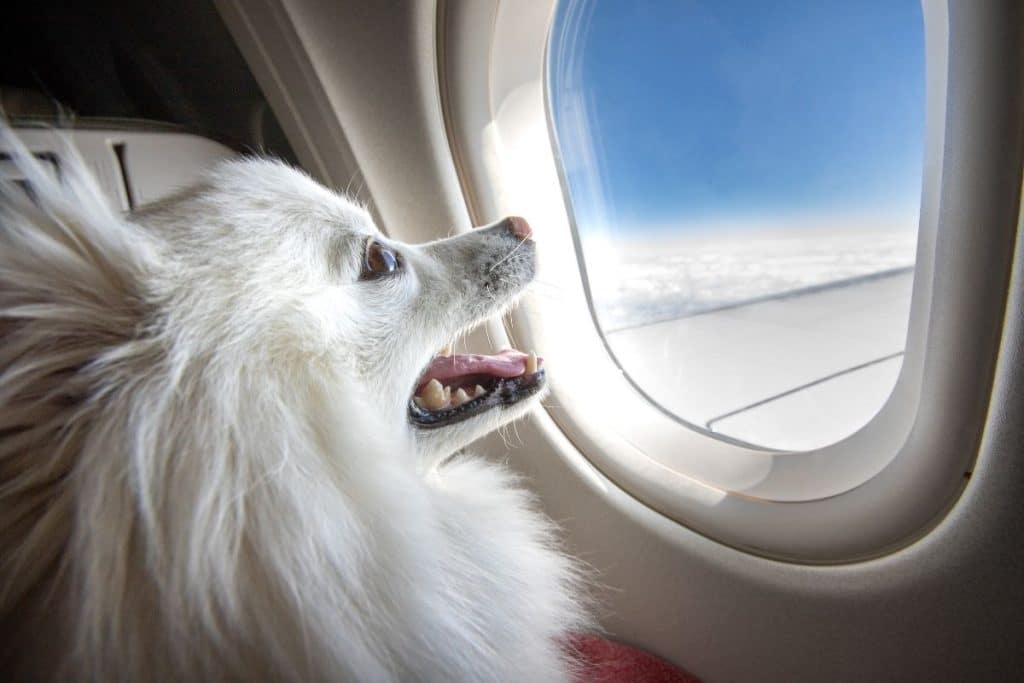
If they do need in-flight relief, it’s important to have a plan in place. Though we can’t train them to use the jet’s lavatory (wouldn’t that be nice!), you should pack absorbent training pads or other products so they can take care of business during the flight.
Tip #3: Make Time for Exercise
Before your flight, be sure to give your dog the opportunity to exercise. If your dogs is tired out from a vigorous run or walk, they’re likely to be more comfortable in the skies. In fact, they may even sleep most of the trip. This can prevent them from getting into something they shouldn’t or whining at you throughout the flight.
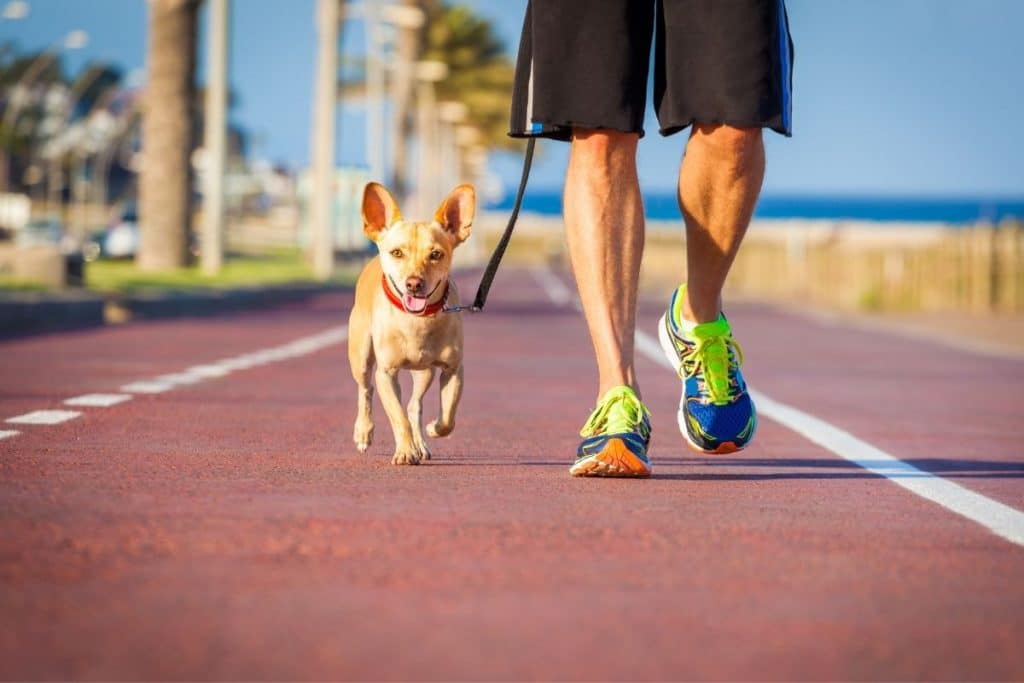
Tip #4: Keep Them Safe Inflight
Just like human passengers, pets need to be harnessed in during takeoff and landing. There are set-restraint harnesses available that work well. If your dog is larger, however, a simple leash may be effective too.
Of course, if they require medication, be sure to keep it readily accessible, especially if that includes sedatives or anti-anxiety medication that will make them more comfortable in flight.
It’s important to make sure you and your dog adhere to the regulations set in place so that both of you arrive at your destination safely and efficiently.
Tip #5: Keep them Comfortable
If your dog enjoys chewing on a bone or relaxing in their crate or sprawled out on their dog bed, be sure to bring those items along with you. When your pets are content, the journey will be much more enjoyable for both of you.
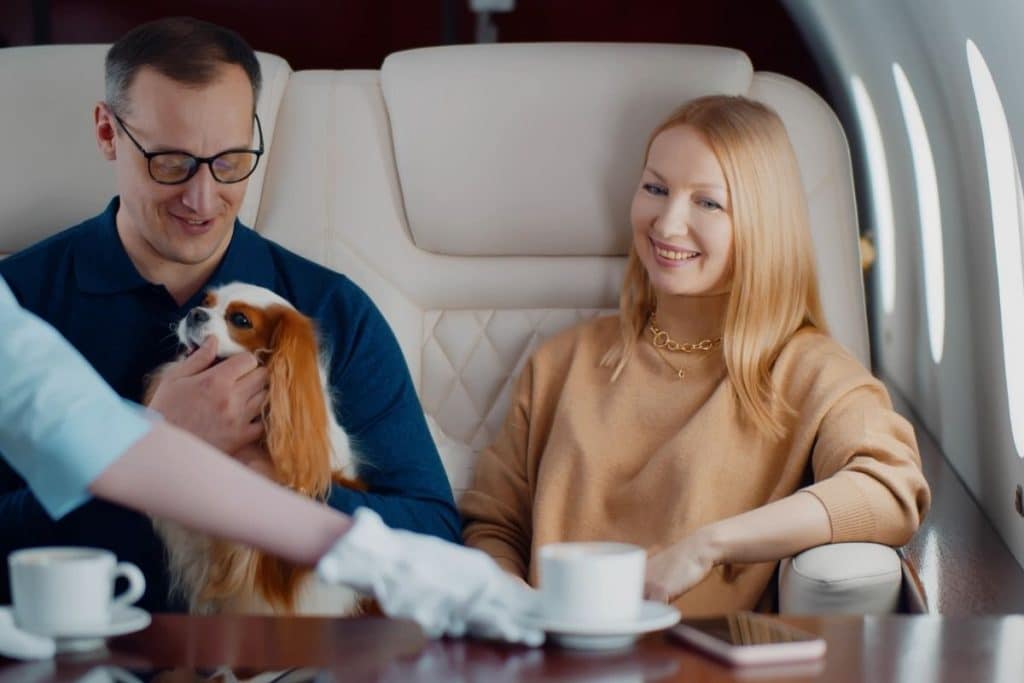
Emotional Support Animal? Here’s What You Should Know
Whether your emotional support animal is a dog, cat, bird, snake or reptile, you can take them into the cabin of a private jet with you so long as you follow the necessary travel requirements.
Currently, emotional support animals are being barred from traveling on commercial flights. Many major airlines are cracking down on the flying-with-pets rules, and that applies to emotional support animals. If your pet is a trained service animal, you may have an easier time getting them aboard your commercial flight. Other animals may be allowed, but you could incur a fee and may have to store them in the cargo hold, even if they’re small enough to fit in a carrier beneath your seat.
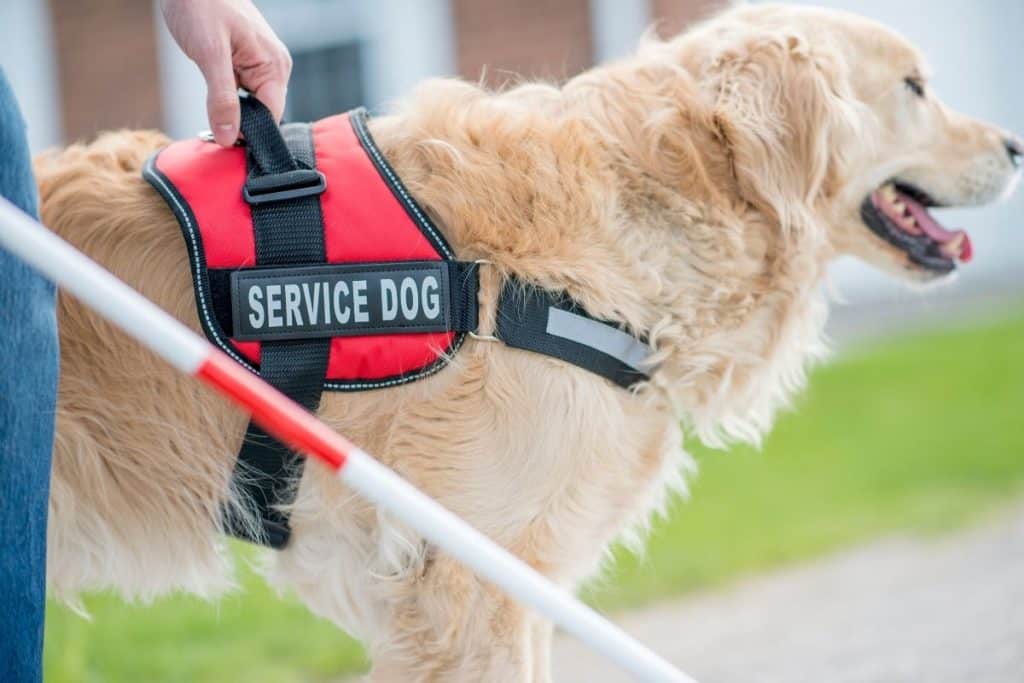
As each airline is different, it’s imperative to call them and ask about their policy before booking a seat on one of their commercial airliners.
Which is better: Flying with Dogs on Private Planes or on Commercial Flights
When you travel with your pet on a commercial flight, you may not be able to bring your pet into the cabin with you. Typically, only small dogs and cats are allowed within the cabin, and they’re required to stay in their carrier beneath your seat. If your pet doesn’t meet those requirements, they’ll ask you to store your pet in the cargo hold in its carrier. For pets that have anxiety around traveling, this could cause them emotional grief.
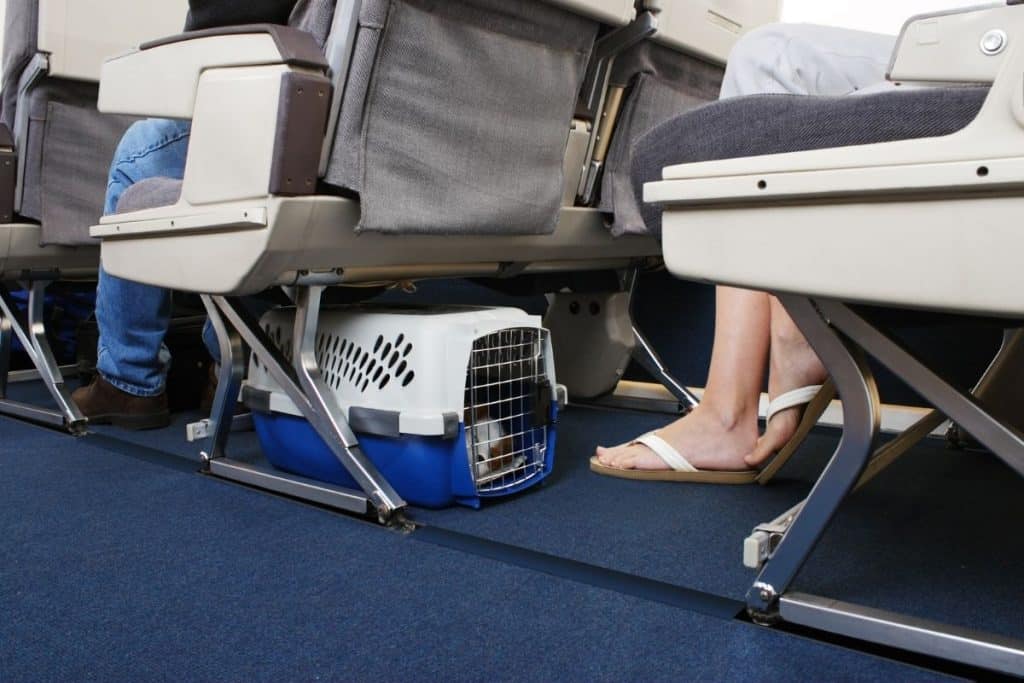
The cargo hold of an airplane is subject to various temperatures, and it’s not uncommon for things to shift around during the flight. This could make loud noises that startle your pet. It’s also not ideal if your pet is used to your constant presence. Once they’re placed in the cargo hold, you won’t be able to see them again until you arrive at your destination. This can be challenging for pets not used to being alone.
Booking a private jet charter is the best way to travel with your dog. Instead of spending the flight in a dark, chilly camped carrier in the belly of the aircraft, your pet can join you in the cabin where you’ll both be most comfortable.
Looking for a pet-friendly private jet? We’ve cultivated strong industry relationships over the last few decades, giving our clients to ability to access the safest planes in the skies. With Stratos, you can feel confident and comfortable when flying with dogs on private planes. Call us for a free quote today: (888) 593-9066!
Are you ready to book your Nice and Geneva charter flight yet?
Our friendly, expert air charter agents are here to answer questions or start your quote today. Don`t wait, call now and we'll get you on your way to your destination!
Call 888-593-9066





